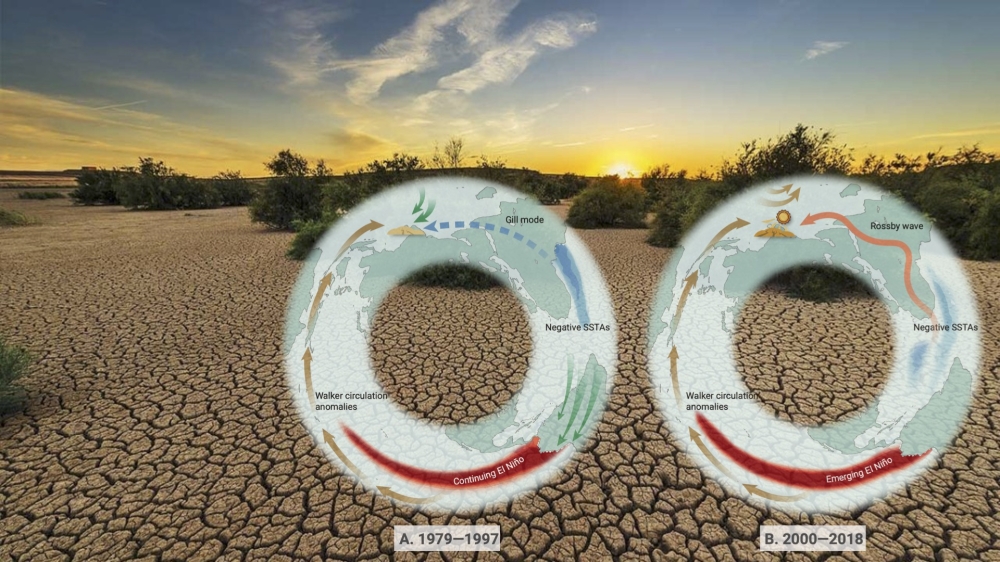The Relationship between ENSO and Indian Summer Monsoon Rainfall Is Restoring
Date:2021-04-14
In the 1930s, English climatologist, Sir Gilbert WALKER, successfully predicted Indian summer monsoon rainfall (ISMR) based on the relationship between Southern Oscillation and ISMR connected by what is later-called Walker circulation, which is regarded as the first achievement of modern climate prediction with a clear physical mechanism. The Southern Oscillation was also recognized as the atmospheric component of El Nino-Southern Oscillation (ENSO).
However, at the end of the 20th century, a research in Science led by Indian climatologist Krishna KUMAR found the significant reverse relationship between ENSO and Indian rainfall has been weakening since the 1970s, impairing the predictability of ISMR. Since then, the instability of the ENSO-Indian rainfall relationship has been an extremely hot topic in climatology research, but its mechanism remains puzzling.
Recently, a study published in The Innovation, led by Prof. HUANG Ping from Institute of Atmospheric Physics at the Chinese Academy of Sciences, found that the ENSO-Indian rainfall relationship has been restoring since 1999/2000, confirmed by multiple dataset sources.

Schematic of the different impacts of ENSO on ISMR in the two periods (Image by HUANG Ping).
This study first identified that the diversity of ENSO's evolution, continuing from the previous winter or emerging from late spring, is the dominant factor perturbing the ENSO-ISMR relationship, with tropical Atlantic SST anomalies as the crucial bridge. During 1979-1997, ENSO events in summer mainly continued from the previous winter, which can drive apparent Atlantic Nina SST anomalies to offset ENSO's impact on ISMR and weaken the ENSO-ISMR relationship. In contrast, when ENSO events newly emerge from late spring, as they have done more recently during 2000-2018, the associated tropical Atlantic SST anomalies are weak and shift to the tropical North Atlantic, which can induce easterly anomalies to suppress ISMR and reinforce the ENSO-ISMR relationship.
"We believe this result can promote the study on ISMR prediction, ENSO's diversity and the inter-basin interaction." said Prof. HUANG. "The clarification on the ENSO-ISMR relationship can also restore our confidence in the climate prediction based on physical process when the application of machine learning method is rapidly developing."
Reference:
Yang X., Huang P. (2021). Restored relationship between ENSO and Indian summer monsoon rainfall around 1999/2000. The Innovation. 2(2),100102. https://www.cell.com/the-innovation/fulltext/S2666-6758(21)00027-8
Media contact: Ms. LIN Zheng, jennylin@mail.iap.ac.cn
